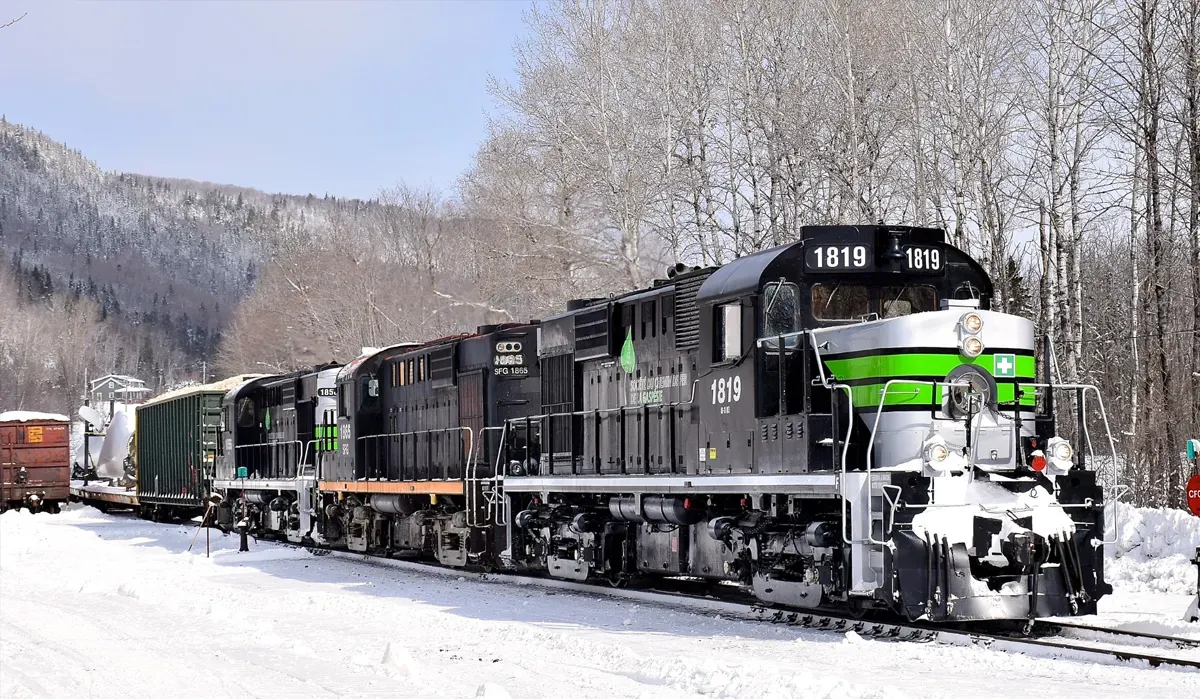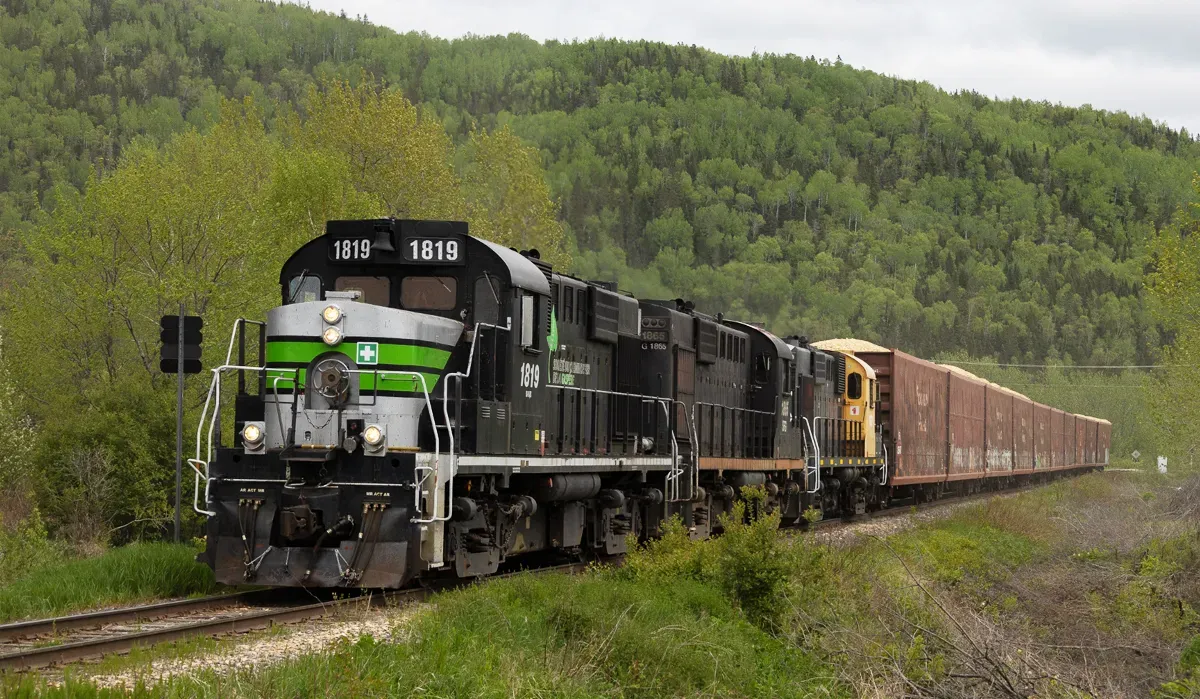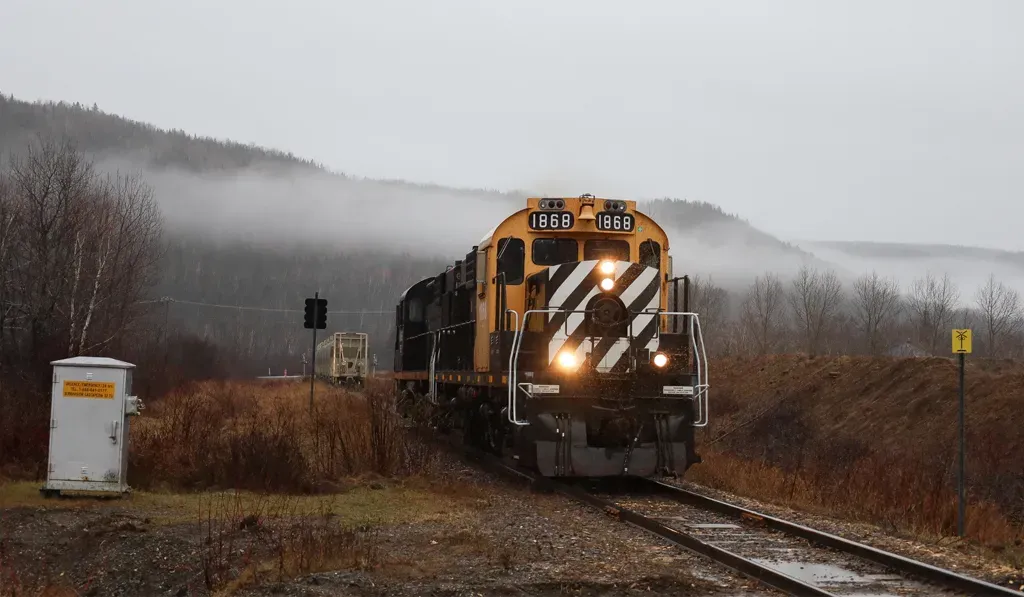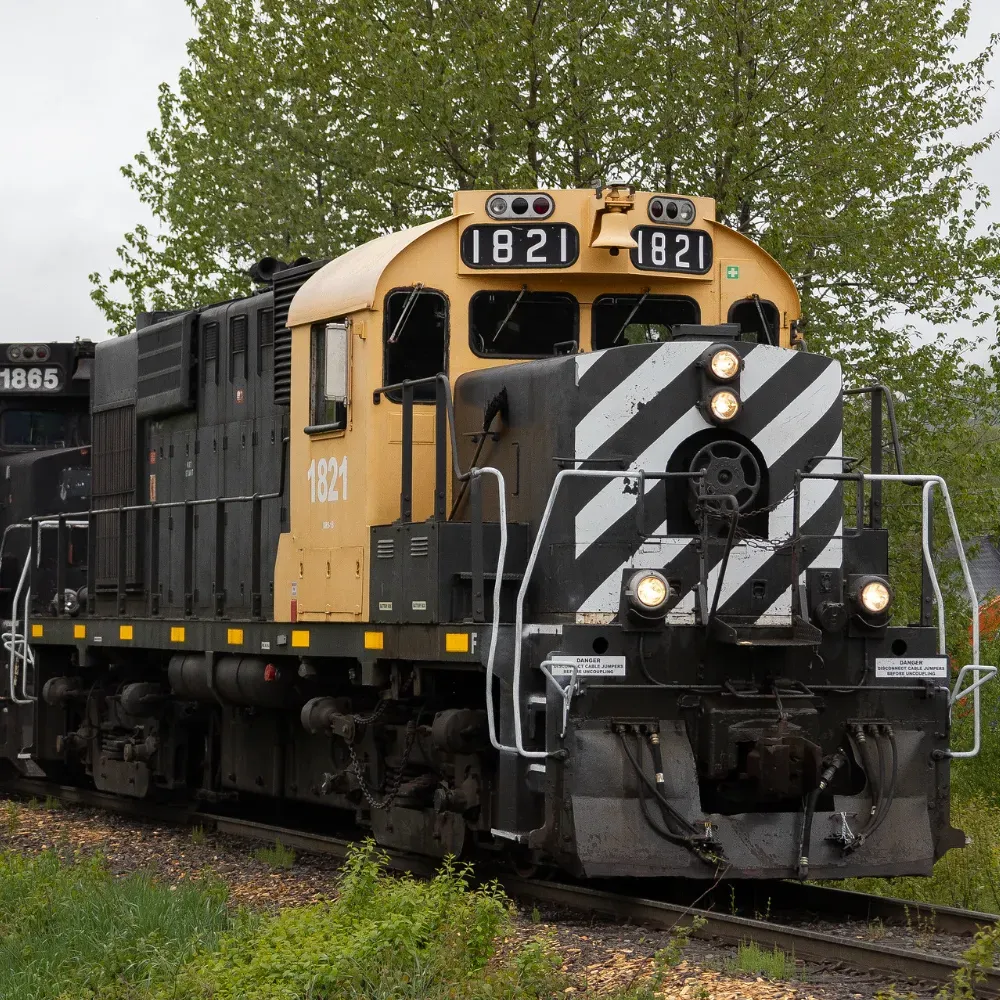REGIONAL RAILROAD
Société du chemin de fer de la Matapédia et du Bas-Saint-Laurent (SLQ) once formed a vital regional rail link in eastern Quebec, connecting resource industries and communities along a 200-mile corridor between Rivière-du-Loup and Matapédia. The line’s infrastructure upgrades in the late 2000s enabled it to handle heavier freight cars and support the region’s wood, pulp, and aluminum industries.


SLQ operated one of North America's most extensive regional freight rail networks in eastern Quebec, connecting businesses across the Bas-Saint-Laurent and Gaspésie regions with safe, efficient, and environmentally responsible transportation solutions. The network spanned approximately 200 miles, primarily serving the forest products, paper, pulp, aluminum, and particle board sectors..

FOUNDING HISTORY & ORGANIZATIONAL STRUCTURE
The company was founded in the 1990s by the Quebec Railway Corporation (QRC) as part of a strategy to preserve and revitalize regional rail corridors following the divestiture of lines by Canadian National. Its original purpose was to maintain freight service for local industries and communities.
HEADQUARTERS & OPERATIONAL BASES
The headquarters was located in Mont-Joli, Quebec, with the main administrative office serving as the operational hub for dispatching, customer service, and maintenance coordination. The facility included offices for management and technical staff, as well as meeting and training rooms for employees..

LEADERSHIP & EMPLOYEES
Jean Fournier served as President of the Quebec Railway Corporation, the parent company of SLQ. The executive team included a Chief Operating Officer responsible for daily train operations, a Director of Engineering overseeing infrastructure projects, and a Chief Financial Officer managing financial planning and reporting. The leadership team brought experience from both Class I and regional railroads, with a focus on operational reliability and customer service.
SLQ employed approximately 60 people, with about 40 being skilled craftspeople, maintenance workers, and service teams dedicated to track, locomotive, and rolling stock upkeep. The workforce included a mix of experienced railroaders and younger recruits, with a strong emphasis on safety and technical training.
FACILITIES & OPERATIONS

Major facilities included the main yard and locomotive shop in Mont-Joli, a transloading terminal in Matapédia, and freight handling points in Amqui, Causapscal, and Sayabec. The line also featured key interchange points with Canadian National at Rivière-du-Loup and Matapédia, supporting regional and long-haul freight flows.

SLQ maintained compliance with Transport Canada and Federal Railroad Administration safety standards and pursued ISO 9001 certification for quality management. The company received regional safety awards for its incident prevention programs and was recognized for its environmental stewardship in right-of-way management.
EQUIPMENT & INFRASTRUCTURE
The railroad handled boxcars for forest products and paper, covered hoppers for grain and minerals, and tank cars for chemicals and petroleum products. The line’s infrastructure upgrades allowed for the movement of heavier, high-capacity cars, supporting efficient bulk shipments.
SLQ used a centralized traffic control system for train dispatching and implemented a basic electronic tracking system for car location and shipment status. Customers accessed shipment information through a secure web portal, and the company began piloting automated track inspection technologies to improve safety and reliability.
The geographic scope included the Bas-Saint-Laurent and Gaspésie regions of Quebec, with a total route length of about 200 miles. Key corridors connected Rivière-du-Loup, Mont-Joli, Amqui, Causapscal, Sayabec, and Matapédia, linking resource industries to national and international markets.
SLQ partnered closely with Canadian National for long-haul interline service and collaborated with regional trucking companies for first- and last-mile delivery. The railroad also worked with local port authorities to facilitate multimodal shipments.

FINANCIAL METRICS & STABILITY
In 2008, SLQ reported a pre-tax profit of approximately $2 million on revenues of $12 million. The company’s operating ratio improved to 82 percent, reflecting enhanced operational efficiency following infrastructure investments.
Recent capital investments included a $14.6 million infrastructure upgrade program in 2008, funded jointly by federal, provincial, and private sources. The company was acquired by Canadian National in November 2008 for $49.8 million, marking a major transition in ownership and operations.
SERVICE PORTFOLIO

SLQ offered a range of logistics services, including full container load and less than container load shipments for forest products, paper, and industrial materials. Additional services included customs brokerage, trade compliance consulting, and cargo insurance, supporting the needs of regional manufacturers and exporters.

The company launched a customer portal to enhance self-service capabilities, allowing clients to track shipments, request quotes, and manage documentation online. An API center was introduced to facilitate integration with customer logistics systems and improve supply chain visibility.
INDUSTRY REPUTATION & NEWS
In recent years, SLQ focused on improving operational efficiency and service quality, implementing automated track inspection and upgrading its locomotive fleet. The company also expanded its transloading capacity to support new industrial customers in the Bas-Saint-Laurent region.
SLQ’s site certification program identified optimal rail-served sites for industrial development, conducting in-depth reviews to ensure readiness for new projects. The program aimed to minimize development risks for customers and enhance supply chain efficiency.
ANALYSIS & FUTURE OUTLOOK